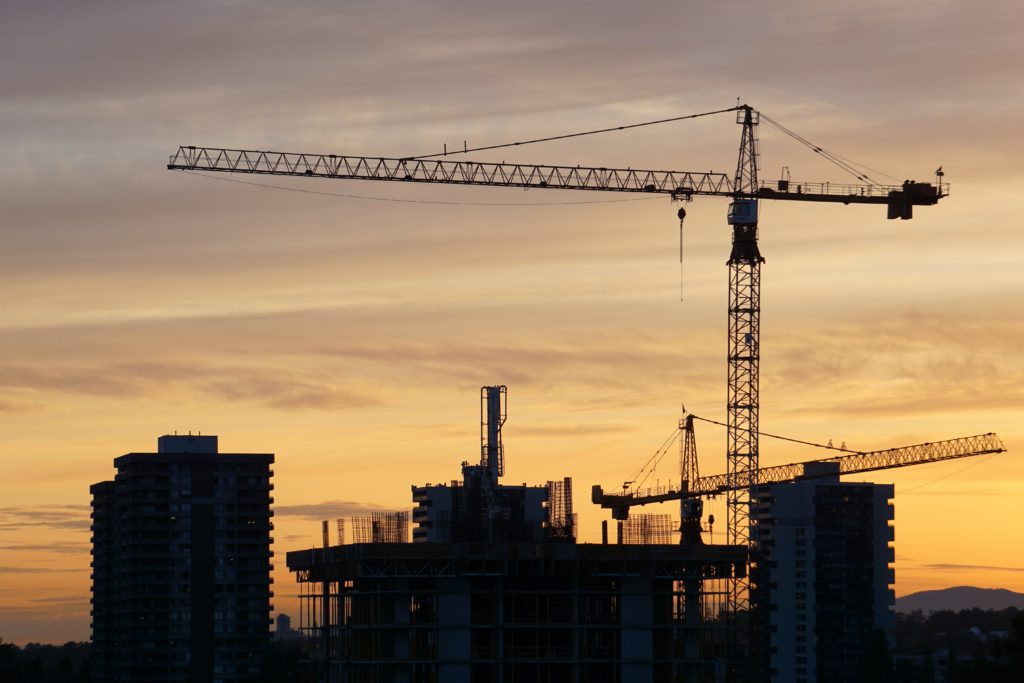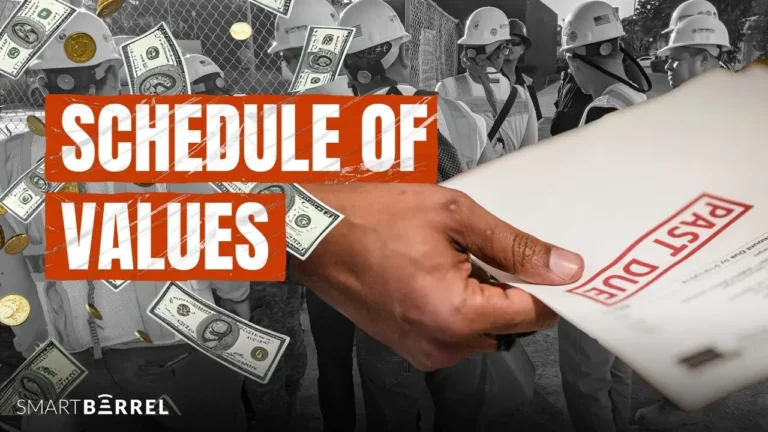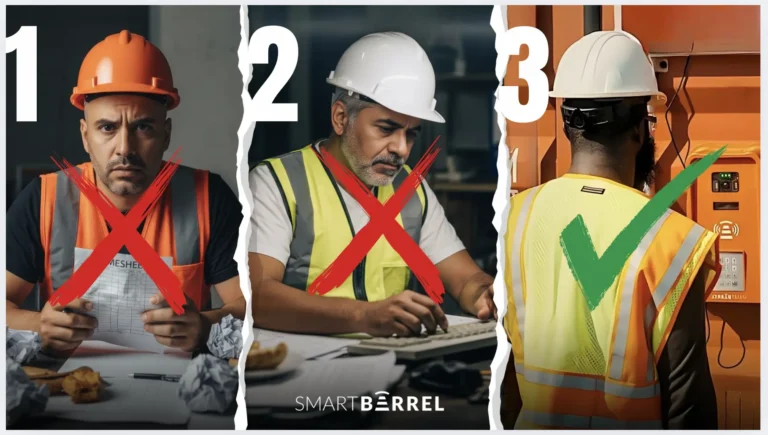Construction projects can often be large and complex, making tracking construction phases all the more important. It’s not uncommon for projects to exceed their expected deadlines, and inaccurate time estimation and phase tracking can significantly contribute to this.
Some construction firms have made use of phase tracking tools to increase efficiency and organization. Regardless, here are some tips for efficient phase tracking to achieve timely delivery, and how the SmartBarrel device can assist you along the way.
What are the phases of construction?
To be able to effectively track the phases of construction, you’ll have to know exactly what to look out for. Here’s how the phases of construction are typically defined.
The planning phase
The planning phase involves defining the goals and objectives of the project, as well as evaluating whether the project is feasible.
Owners, construction managers, and architects discuss the plan for what will be built, the project scope and quality expectations, and whether the plan will likely be approved by jurisdictional authorities.
While planning represents only a small segment of the project’s overall cost, it has a huge impact on how cost-effective the project will end up being. The planning phase is arguably one of the most important phases of construction projects, as it lays down the foundation for the entire project.
The pre-construction phase
The pre-construction phase sees the project team being put together, who then do all the preparations necessary to ensure the construction site is ready to work on. This may involve dealing with environmental issues like, for example, soil testing.
Once a construction site has been examined, all documentation must be reviewed by local authorities to get the green light.
A plan should then be created, including a budget, design, and timeline to be finalized. Project teams during this phase must acquire all the required labor and resources to complete the project.
The construction phase
The construction phase is where the bulk of the planned work will be completed. Construction managers will start transitioning the project to begin actual construction.
Managers, architects, and engineers in this phase respond to Requests for Information (RFIs), perform quality control inspections, and review technical submittals.
The main concern in this phase is ensuring that the project will be delivered as designed and planned.
The close-out/post-construction phase
The close-out/post-construction phase is the last step in the project’s life cycle. By now, all the necessary job site work has been completed, and steps should be taken to close out the project.
This involves demobilizing resources, returning equipment rentals, and cleaning up the job site, with subcontractors moving onto other projects.
This phase is also a good time to do a post-project review to reflect on and analyze any challenges during the project and how to avoid them for future projects.
3 tips for efficiently tracking construction phases
Here are some tips for efficient construction phase tracking.
1. Estimate construction time accurately
When tracking the phases of construction projects, it’s best to start with an estimate of the time required to complete each given segment. This will allow you an accurate picture of how the project will progress through each phase.
It’s important to understand that construction work can be laborious, thus requiring a sufficient amount of time to adequately complete. Unrealistic estimates can be detrimental to project completion, creating a chain reaction of delays in each phase.
In fact, there’s often a disconnect between the office and the field that causes planners to set unrealistic deadlines. Constant delays can greatly affect a company’s image and reputation when you fail to deliver promises.
Therefore, it’s important to not only establish deadlines, but set accurate ones, leaving enough room for contingencies and giving workers sufficient time to work. This will also make working through each phase much easier, as you’ll have a roadmap for progression.
2. Invest in construction tracking tools
The construction industry suffers from a multitude of inefficiencies that are easily solvable through tracking tools. While construction firms have been known to be hesitant to adopt new technologies, they can contribute to business growth, enhance scalability, and improve a company’s reputation by making operations like phase tracking more efficient, thus improving results.
Devices like the SmartBarrel device allow you to optimize activities by letting you keep tabs on worker attendance and hours worked. Look for easy-to-use features that focus specifically on time, cost code, and phase tracking.
One of the best things about making use of these technological tools is that it helps with cutting down on labor costs by reducing overhead expenses, while also ensuring that everyone gets paid for the number of hours they’ve worked.
The best tools sync with other platforms, storing operations and team data in one centralized and easy to access location.
3. Train workers on procedures and tools used
Teaching your team how to adhere to established procedures and effectively use tools for phase tracking can increase productivity. The sooner these procedures and tools are introduced, the better.
If no processes have been created, consider developing a set of guidelines relevant to your project. This will streamline the process of phase tracking and make the job much easier to progress through.
Track construction phases efficiently with the SmartBarrel device
When you’re having trouble meeting deadlines and sufficiently completing the stages of construction projects, investing in time and phase tracking tools can increase overall efficiency. Technological solutions like the SmartBarrel device ensures timely delivery and cuts down on high labor costs.
The SmartBarrel device is a plug-and-play box that’s easy to use and set up. It’s magnetic, weatherproof, solar-powered, and LTE-connected—plus it’s built to last in the rugged conditions of construction sites, able to withstand a fall or two. Our device is suitable for job sites of all sizes, from small residential projects to larger megaprojects.
Track construction phases throughout the project’s life cycle and benefit from increased visibility, tracking worker attendance and hours spent on site to oversee the project as a whole. Using the SmartBarrel device, you can enhance productivity and adequately complete building construction stages.
Our device also syncs with Procore, CMIC, FoundationSoft, Viewpoint, and Autodesk.
Want to enhance your phase tracking process? Book a demo with SmartBarrel today!






